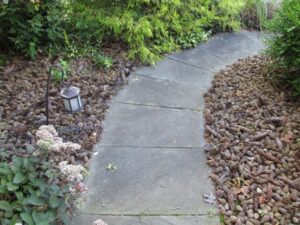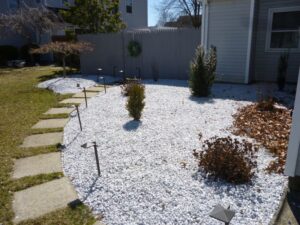Overview:
When used properly, mulches and composts can improve soils and provide many beneficial effects to plant health and vigor. Undesirable nuisance fungi, however, may also occur when different types of mulches or composts are used under certain conditions. Some of the more common examples of these nuisance fungi include the shotgun or artillery fungus (Sphaerobolus), slime molds (Physarum), stink horns (Mutinus), bird’s nest fungi (Crucibularium), toadstool mushrooms, and several plant pathogens. Although these nuisance fungi are mostly natural decomposers of organic matter and most of them are harmless, this blog discusses how the various nuisance fungi sometimes associated with mulches and composts can be controlled or minimized.

Organic landscape mulches & composts under certain conditions can promote nuisance fungi. (Photo Credit: Steven K. Rettke, Rutgers Coop. Ext.)

Although stone mulch will certainly eliminate any growth of nuisance fungi, it does not benefit plant health. (Photo Credit: Steven K. Rettke, Rutgers Coop. Ext.)

